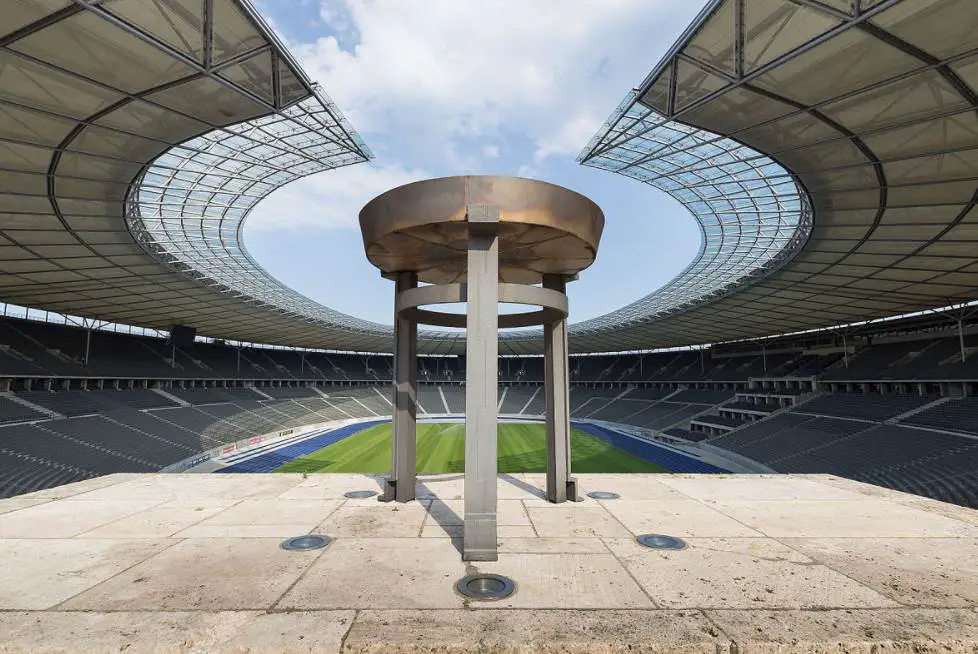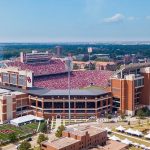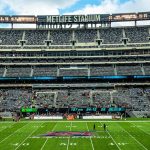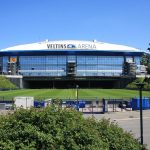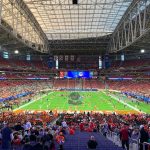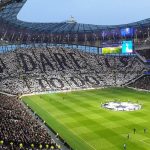One of the greatest stadiums in Europe is located on the western outskirts of Berlin, the capital of Germany.
It was constructed for an important event after which it was named. This is something it shares with the Stadio Olimpico in Rome to name just one.
In this article, you’ll discover some of the most interesting facts about the Olympiastadion in Berlin, an enormous sports temple in Germany with some remarkable stories to tell.
1. It’s the centerpiece of a huge sports complex in Berlin
The Olympiastadion is the largest stadium in Berlin with a seating capacity of 74,475 seats. This also makes it the third-largest stadium in Germany after the Westfalenstadion (81,365) in Dortmund and the Allianz Arena in Munich (75,024).
The stadium is the main venue of a much larger sports and entertainment center called the “Olympiapark.” This is situated just north of the Grunewald Forest, a national forest in the western part of Berlin.
The sports complex started as the venue of a race track called the “Grunewald Race Course” which was established in the 1860s.
The Olympiapark was expanded and referred to as the “Deutsches Sportforum” between 1912 and 1933 and as the “Reichssportfeld” during Nazi rule between 1933 and 1945.
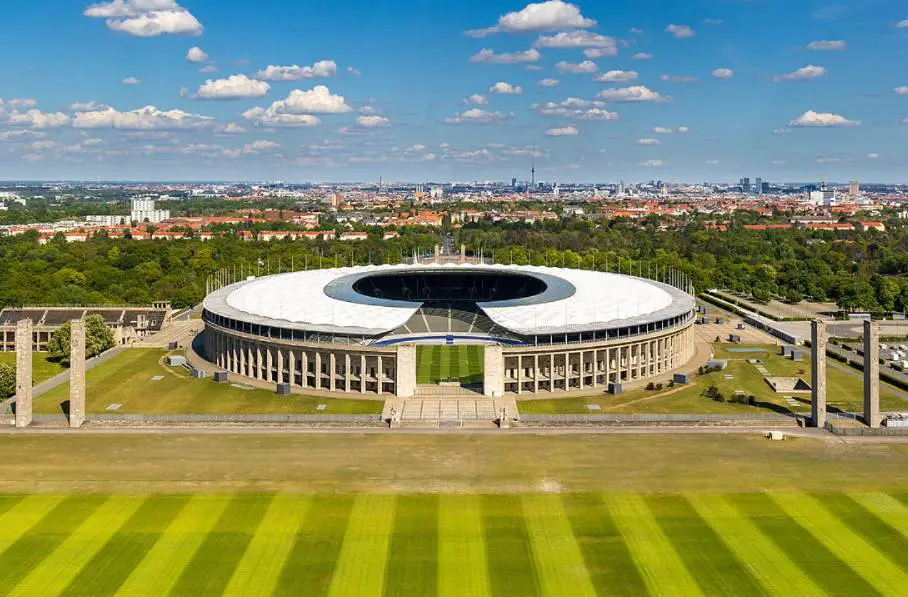
2. It replaced an older stadium that was built for the same reason
The stadium, along with multiple other venues in the Olympiapark, was constructed to host the 1936 Summer Olympics which took place in Berlin. This was the 11th time the modern-day Olympics were held.
A stadium in this location was already constructed earlier to hold the 1916 Summer Olympics, but this event was canceled due to World War I. It was called the “Deutsches Stadion” and held over 18,500 people upon completion in 1912.
The horse racing track that originally stood here was buried into the ground and the Deutsches Stadion was constructed on top of its foundations.
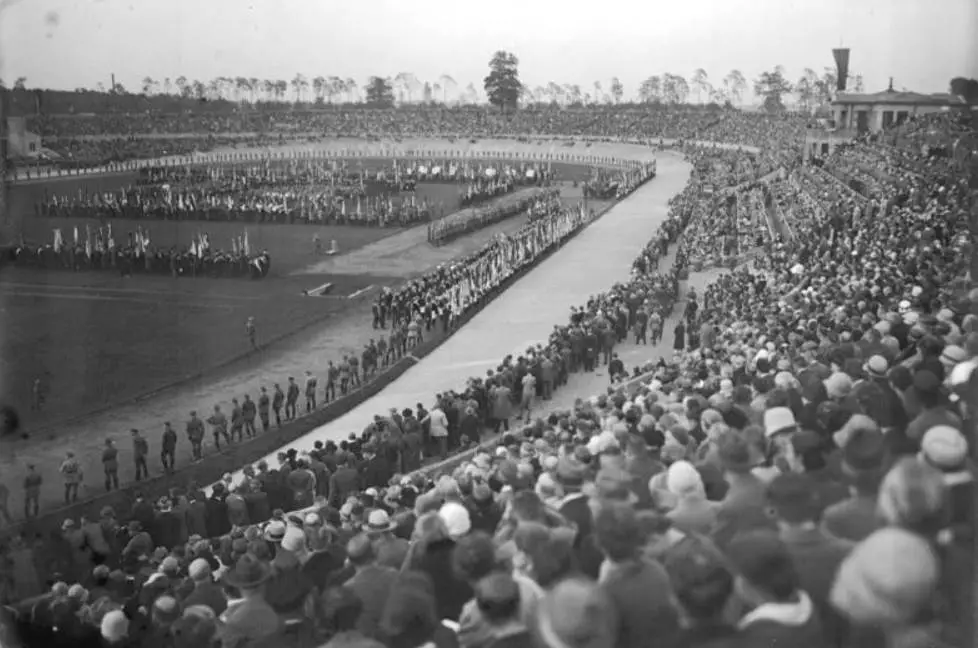
3. The architect’s son designed the new stadium in the 1930s
The old stadium was also known as the “Grunewaldstadion” or the “Berlin Stadium” and was demolished to make way for the Olympiastadion. This stadium had a capacity of 110,000 spectators upon completion.
The same tactic was used because the Deutsches Stadion was buried into the ground and the imposing new stadium was constructed on top of its foundations.
One of the most fascinating facts about the Olympiastadion is that the architect of both the original race track and the Deutsches Stadion was Otto March (1845-1913). His son Werner March (1894-1976) walked in his footsteps and went on to design the new stadium in the 1930s.
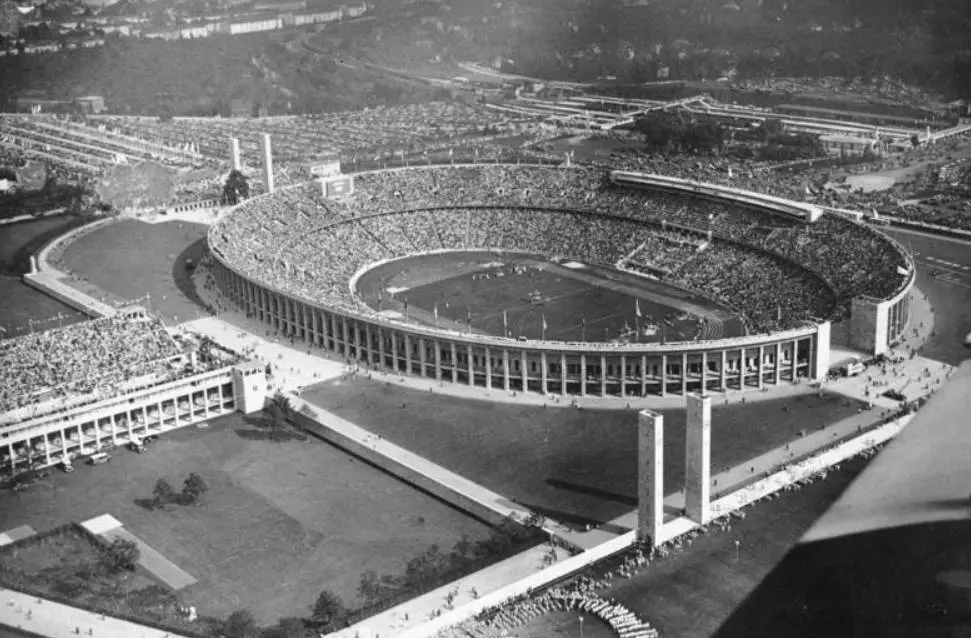
4. It has been the home venue of a German football club since 1963
The stadium was used for mass propaganda events by the Nazis and was the main venue of the 1936 Summer Olympics. This was quite a remarkable event because just 3 years later, Adolf Hitler initiated World War II by invading Poland.
It was the first Olympic Games that had live television coverage and 4 million tickets were sold to spectators. Many of these saw one of the most amazing Olympic achievements in history as Jesse Ownes won the gold medal in the 100 meters, 200 meters, long jump, and 4 x 100 meters relay events.
The British briefly occupied the sports complex after World War II. The stadium was used again in the 1960s as it has been the home venue of German football club Hertha Berlin since the year 1963.
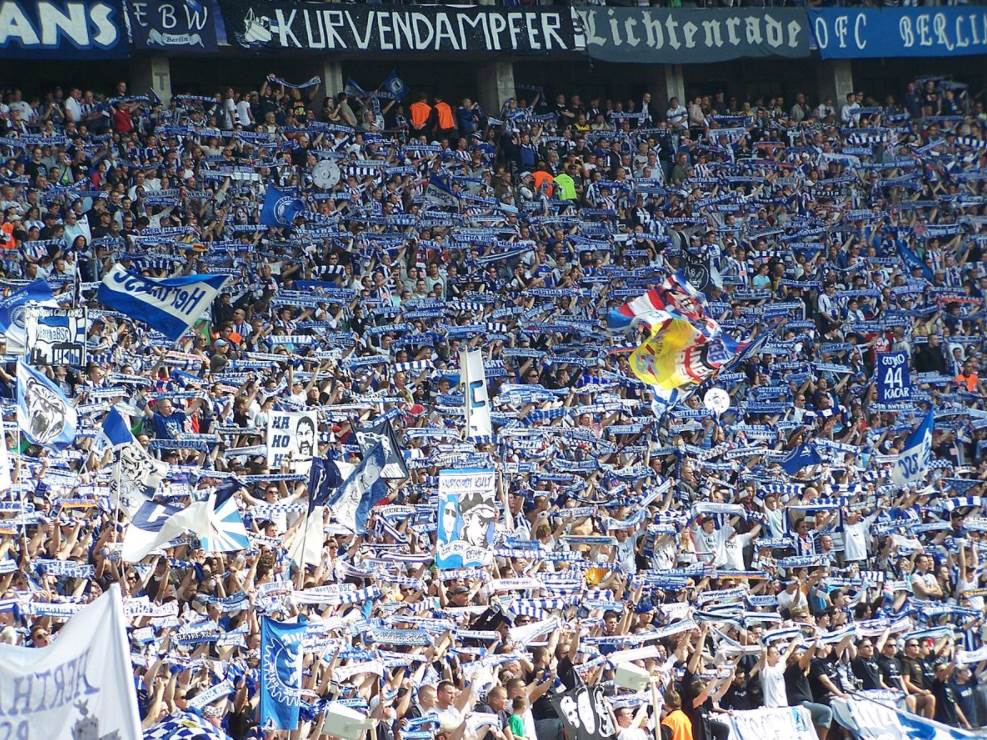
5. It was turned into a modern sports temple in the early 21st century
The stadium was one of the venues during the 1974 FIFA World Cup and hosted 3 games. This World Cup was won by the host of the tournament, West Germany, who beat the Netherlands 2-1 at the Olympiastadion in Munich.
To qualify for becoming one of the venues of the 2006 FIFA World Cup, the stadium had to be completely renovated. This enormous project consisted of both lowering the playing field significantly and extending the roof by an additional 37,000 square meters (400,000 square feet).
The project cost €242 million to complete and turned the 1936-stadium into a modern sports temple that is considered to be a UEFA category four stadium.
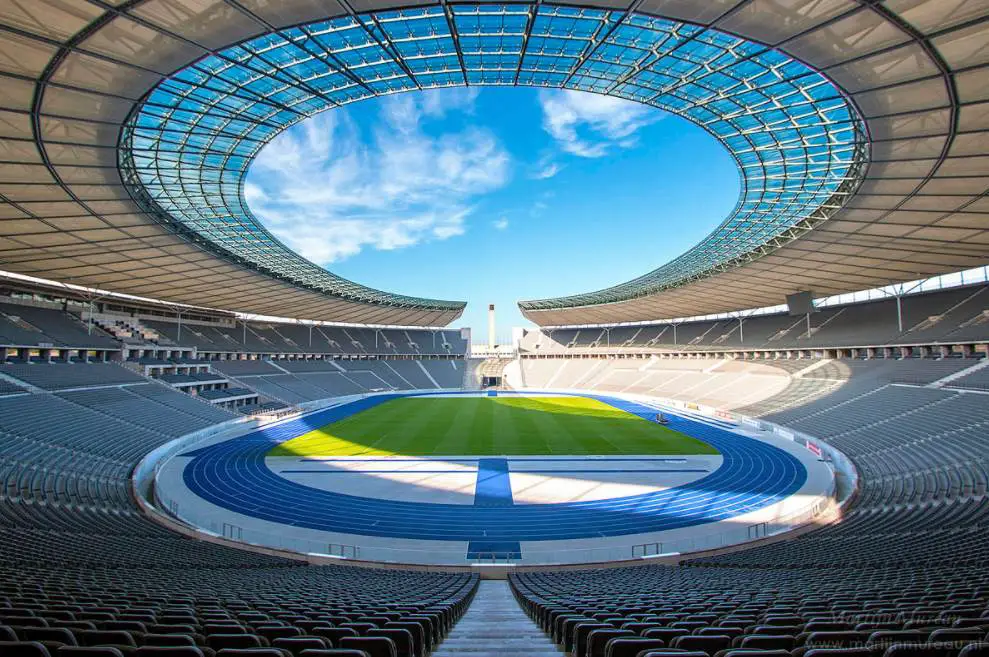
More interesting facts about the Olympiastadion
6. The stadium only hosted 3 matches during the 1974 FIFA World Cup but was the venue of 6 matches during the 2006 event, including the final between Italy and France (1-1) which Italy won after penalties.
7. The FIFA World Cups weren’t the only times that important events took place at the stadium. It’s the venue of the yearly DFB-Pokal final (the German Cup FInal) and also hosted games at the 2011 FIFA Women’s World Cup and the 2015 UEFA Champions League Final (Juventus 1 -Barcelona 3).
8. The Olympiapark features a large number of other structures that were constructed as venues for the 1936 Summer Olympics. Some of these include the Maifeld, a huge lawn that is used today for concerts, and the Swimming Stadium located just next to the Olympiastadion.
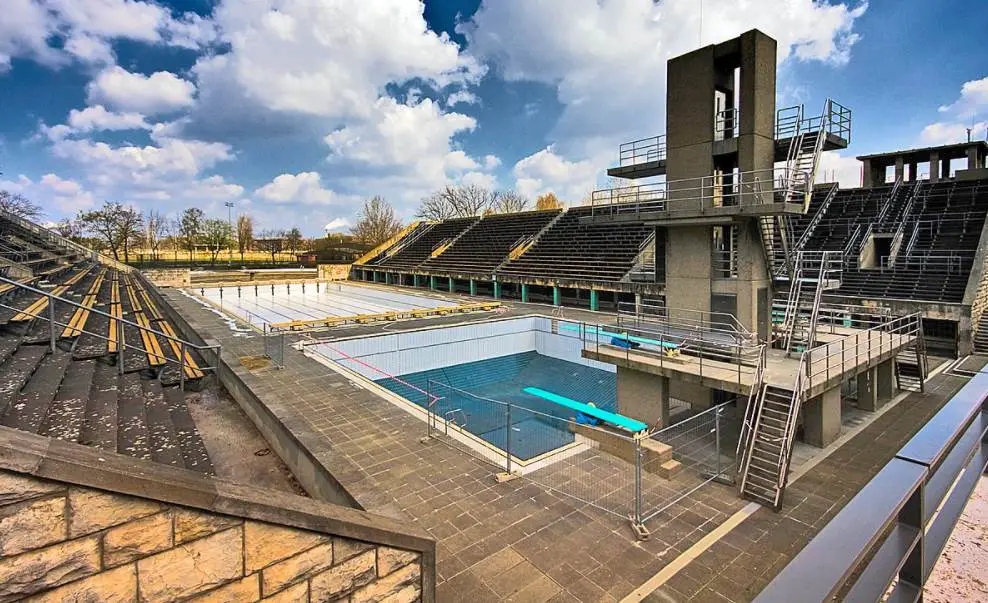
9. One of the most fascinating landmarks near the stadium is the Bell Tower, a replica of the original bell tower that once housed the Olympic bell. The tower stands 77 meters (253 feet) tall and has the exact design of the original tower that was demolished in 1947.
10. The Olympic bell that was located at the top of the original tower crashed to the floor from a height of 77 meters (253 feet) when the tower was demolished in 1947. This damaged the bell so much that it can’t ring anymore. It now serves as a memorial located near the stadium.
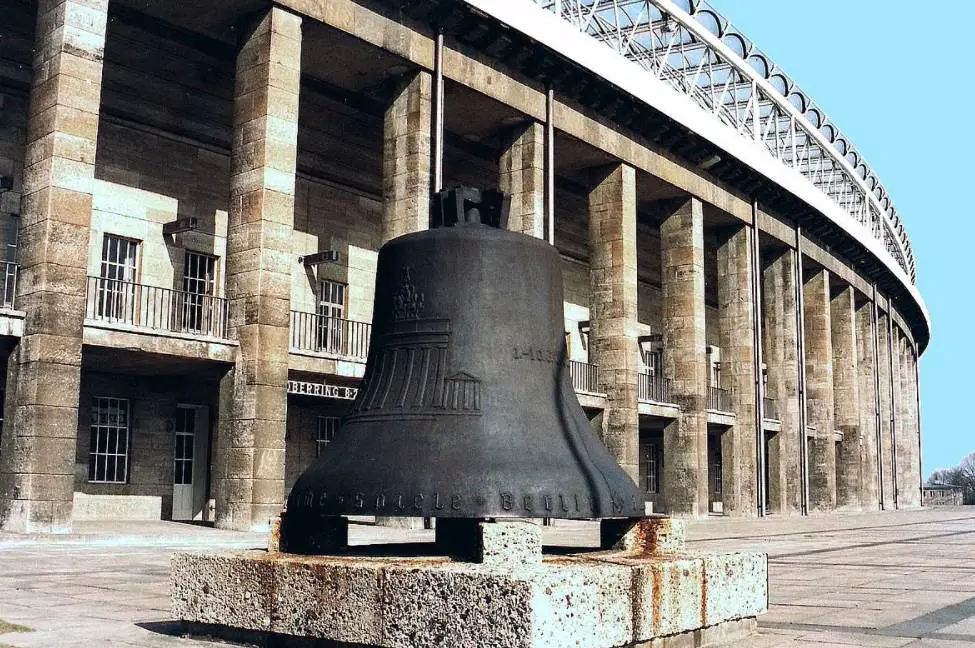
11. The stadium renovation in the early 21st century preserved the original architecture of the stadium’s exterior. This means that the outer structure of the stadium pre-dates world War II.
12. It wasn’t exactly clear what was to happen to the stadium during the late-1990s. Some people suggested building a completely new stadium and letting the old one crumble like the Colosseum in Rome. This was to serve as a metaphor for the fall of the Third Reich.
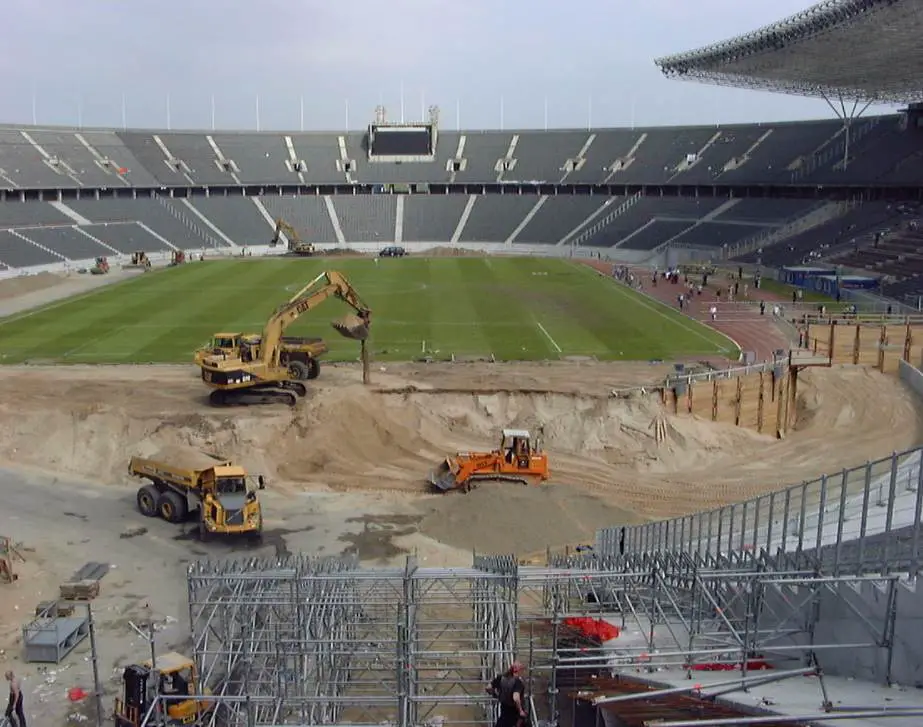
13. The stadium was the home venue of an American Football team between 2003 and 2007. The Berlin Thunder played in the NFL Europe during this period and therefore joined the same home venue as Hertha BSC.
14. The stadium once held the world record attendance for a baseball game. Over 100,000 watched a game during the 1936 SUmmer Olympics.
15. The playing field of the stadium was lowered by about 2.65 meters (8.7 feet) during the renovation in the early 21st century. This resulted in 90,000 cubic meters (3,200,000 cubic feet) of sand being excavated.
16. The roof of the stadium is covered with transparent panels which allow sunlight to enter the arena during the day. It rises 68 meters (223 feet) above the seats below.
17. The stadium is one of the most amazing venues in the world for athletics events, the main purpose that it was originally constructed in the 1930s. The more recent major athletics event at the stadium was the 2018 European Athletics Championships.
